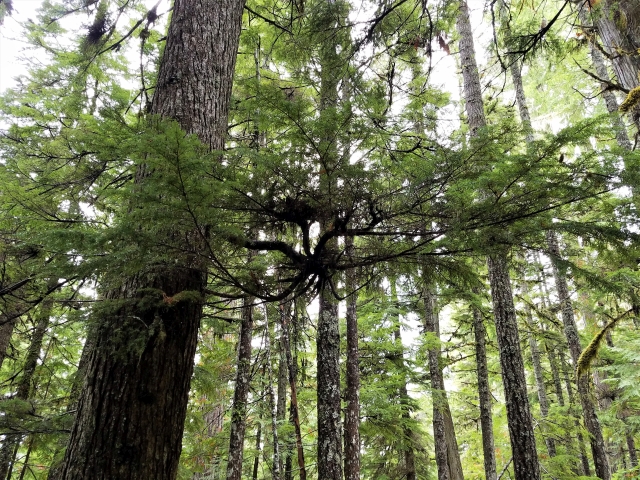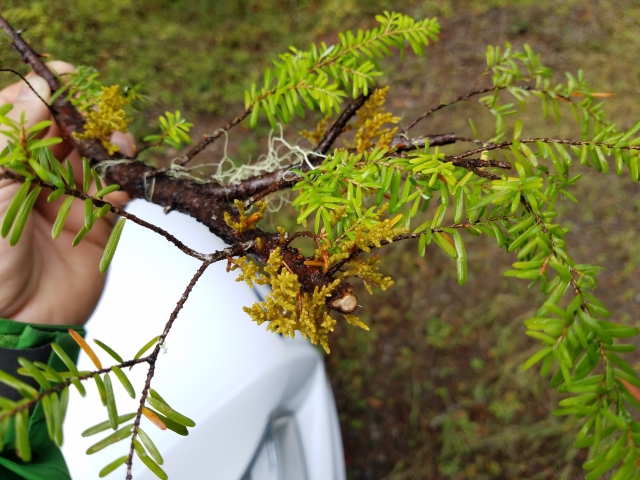Drought, dwarf mistletoe and tree mortality (Bell et al. 2020)
Dwarf mistletoe, a native parasitic plant, commonly infects western hemlock trees in western Oregon and Washington via projectile seeds that land on branches and spread through the tree’s bark. The plant induces tissue swelling and deformities while altering plant physiology, growth, and tree vigor, especially among heavily infected trees. As climate change generates hotter and drier conditions, there is a need to know how parasitic plants, like dwarf mistletoe, interact with climatic conditions to alter tree growth and mortality, and thus forest productivity.
In a new paper published in Global Change Biology, US Forest Service scientist David Bell, along with OSU co-authors Rob Pabst and David Shaw, examined several decades of data gathered from permanent plots at the Wind River Experimental Forest, a 500-year-old forest located in Washington State that is part of the Forest Service’s Experimental Forest and Range Network. Bell, Pabst, and Shaw studied five repeated measurements of nearly 1,400 individual hemlock trees from 1991 to 2014, examining how western hemlock tree growth and mortality varied with temperature increases, precipitation decreases, and mistletoe infection rates.
Tree growth rates decreased and mortality rates increased during warmer‐drier time periods for all hemlock trees, regardless of infection status. Growth reductions and increases in mortality were also related to mistletoe infection intensity, most notably during the warm and dry measurement intervals. Forests of western Oregon and Washington are often assumed to have low vulnerability to climate change relative to drier forests east of the Cascades. However, this long-term research revealed an unrecognized vulnerability of west-side forests to climate change as a function of common, native pests and pathogens.
For managers, these findings suggest that native pest and pathogen management may be a key component of preparing for climate change.



